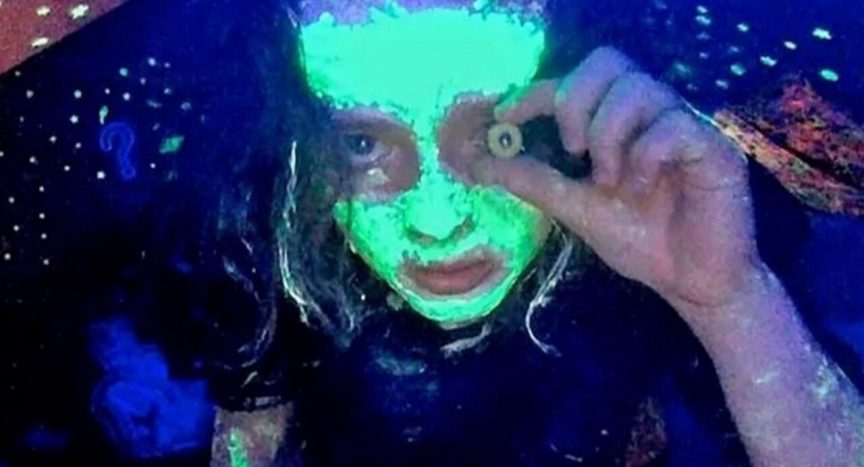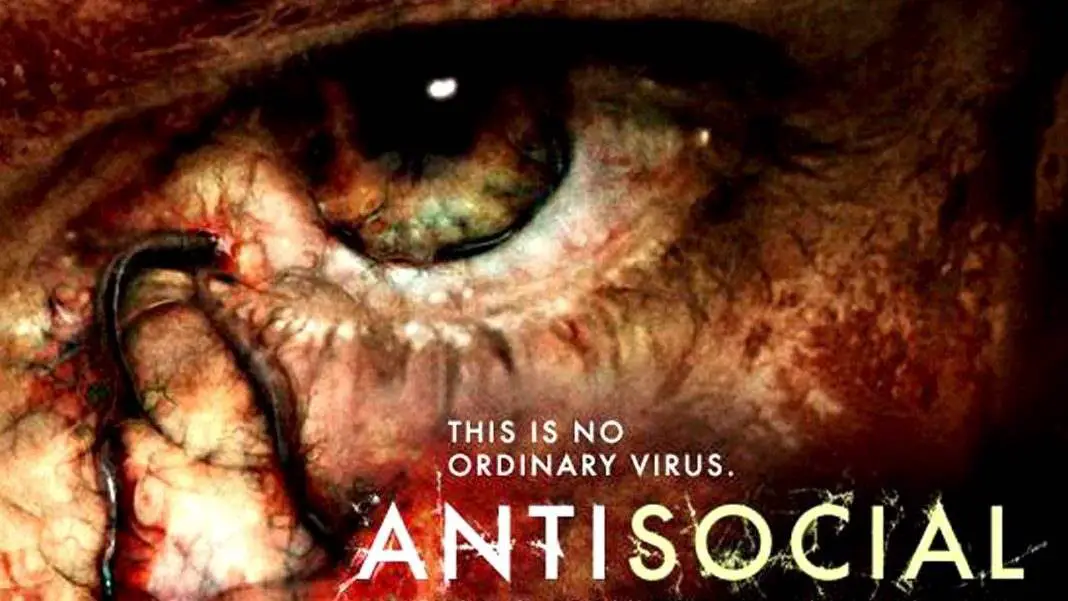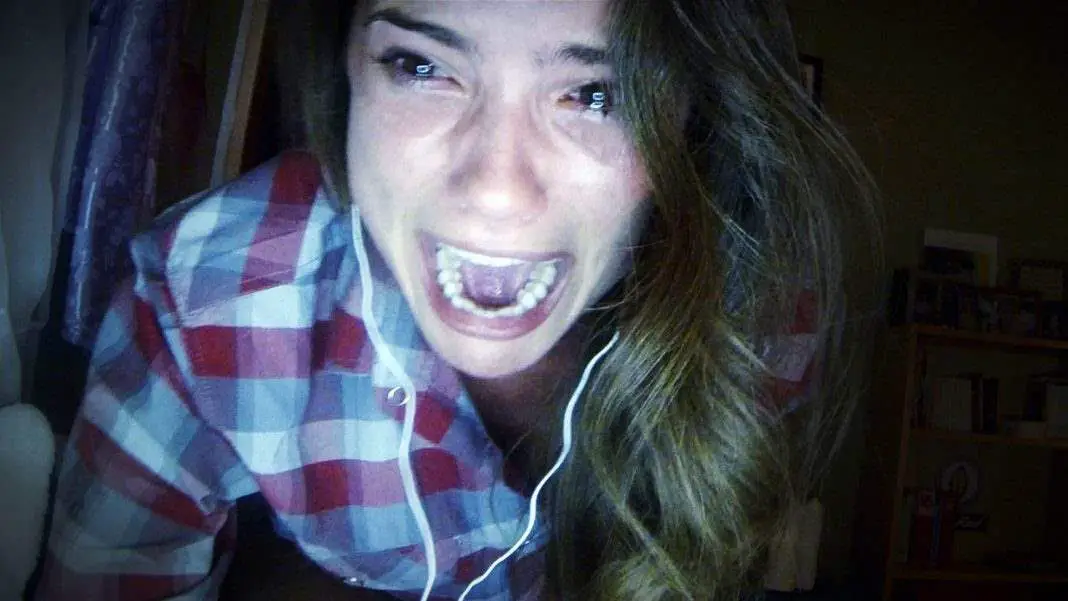There is still much to be unpacked and explored by filmmakers about social media and living in an online world, especially filmmakers in the horror genre. Social media being so ethereal and transcendental makes it beautiful but also terrifying, as anyone who has spent a few hours on Twitter or Reddit can attest.
There are, of course, already a number of horror films wherein the Internet plays a major role, but very often these examples are on the more gimmicky side. Films like Unfriended or Host treat the Internet like a location, like Camp Crystal Lake. There is not as much engagement with the more chilling aspects of the Internet as there should be.
There are certainly other horror films that have a richer engagement with the subject, such as Like Me, but perhaps none so far have been as haunting as director Jane Schoenbrun’s debut narrative feature, We’re All Going to the World’s Fair. It is a subtle, yet stunning, film that explores and evaluates, though never necessarily condemns, the notion of identity, online personas, and how young people grow up on social media.
We’re All Going to the World’s Fair begins with a fixed shot, presented as a webcam recording, that sits on main character Casey (newcomer Anna Cobb) as she prepares to participate in an MMORPG called “the World’s Fair Challenge.” This opening sequence immediately sets the film apart from other social media horror films with its patience, minimalism, and composition. Casey sits in front of the camera, practicing an intro to her video, trying to find a tone that’s pleasing to her, and going through a few practice runs before she settles. There’s a distance in Casey’s eyes that betrays a sadness, and her bedroom behind in the shot is not so much in focus, save for a question mark curiously hanging on a wall, over her head. This young woman is clearly trying to piece together something else entirely as she’s piecing together this video intro.
Halfway through this 8-minute sequence that Schoenbrun impressively keeps moving narratively while in the static shot, Casey is ready to begin her video. She shuts off the lights in her room so her aesthetically pleasing glow-in-the-dark wall stickers can set the mood, and she grabs a stuffed animal from her bed to hold during the recording. Whether this particular touch is Casey using a prop to endear herself to an audience or a much needed security blanket seems open to interpretation, which will be appropriated throughout the film.
Casey hits record, and she begins “the World’s Fair Challenge.” Reminiscent of something out of a Creepypasta, the entry price into this game is a ritual that involves Casey saying “I want to go to the World’s Fair” three times, stabbing herself with a pin, smearing the blood on her screen, and watching a video that enfolds Casey’s face in strobing colors, each new hue appearing to alter her appearance ever so slightly before everything goes black, and Casey thanks us for watching, promising to post any updates as they happen.
This wonderfully composed opening sequence reveals so much about Casey’s character, specifically her isolation and her calculated yet clearly desperate attempts at belonging, even going so far as to hurt herself to play a game all her favorite content creators are playing.
Anna Cobb’s debut turn as Casey is tremendous. She arrests viewers immediately in the aforementioned opening sequence and never lets go. Her performance is slight, measured yet speaks volumes. Cobb brings a vulnerability to Casey that is authentic, a huge asset for this film given its subject matter. Authenticity is key, and Casey has it in spades thanks to Cobb.
This vulnerability comes from a place of sadness that Cobb seems to manifest so naturally in Casey, especially in the character’s body language, which also expresses her to be insecure. It’s one of the most layered performances in recent genre history, and deserves further acclaim for being given by such a new actor, who carries the film on her back. I would expect big things from Anna Cobb wherever she ends up next.
Jane Schoenbrun’s direction and writing also cannot be praised enough. Their script is as layered as Cobb’s performance, and their direction is tight, focused, and moves the narrative forward with incredible confidence.
There is little humanity in Casey’s life. Schoenbrun takes care to compose every scene with her main character’s isolation and loneliness in mind, even down to the film’s opening credits, which features a somber song by musician Alex G bathed over shots of a nondescript rural town. You can find a town like this everywhere in America—vast stretches of land yet empty of people, unless you count the ones in their cars driving to and from work, to and from the fast food drive-thru line.
It’s no wonder Casey lives online. She must, because her real world is vacant. We hear about her father throughout the film but never see him, though we do hear him in one fascinating scene where he bangs on his daughter’s door, reprimanding her for being so loud, so late at night.
Casey jumps up, startled, and slams her laptop shut, which is a nice touch because it opens up a lot of possibilities such as a potential contentious relationship between Casey and her father, but it also says a lot about how Casey has grown used to living online. Her loneliness in the real world brought her online, and when the real world interupts her in her safe space, she keeps it safe by closing it off to the intruder.
Did You Know? Wicked Horror TV Has Classic and Independent Horror Films Available to Stream for Free!

There has already been discourse about potential queer themes in We’re All Going to the World’s Fair, which this scene can certainly support. Casey’s reaction to her father’s interruption is to hide her online life, which countless queer youths can relate to, especially those who have grown up with secret social media accounts that allowed them to be their true selves far away from the eyes of their families.
Casey documenting her changes as she plays “the World’s Fair Challenge” has also read as a trans narrative to many viewers, and with the film’s director identifying as non-binary, it isn’t a stretch to see the bones of this throughout. Living online is absolutely a universal experience among young people, but the anonymity and autonomy of the lifestyle is particularly attractive to young queer people because they feel they can safely find their support system in this way.
However, each subsequent video Casey makes blurs the line between reality and gameplay, drifting further into dangerous territory with each new update and interaction she has, and while young people finding safe havens online is a beautiful thing, the engagement Casey has with her online world illustrates the web’s darker elements, the elements which are ripe for the horror genre.
The only other character seen in We’re All Going to the World’s Fair is an older man named JLB (Michael J. Rogers) who reaches out to Casey with concerns about her content. JLB develops an odd relationship with her by encouraging more content creation, and he certainly comes across as an odd person throughout the film, with his heavy breathing cadence and overt interest in Casey’s gameplay.

There is never any definitive answer about JLB’s motivations, though, and the character ends up representing both good and bad people that can be found online. One wonders if his encouragement of Casey’s gameplay is in fact the most malevolent aspect of JLB’s character, though.
JLB continuously asks Casey to keep making videos so he can be sure she’s safe, which is a strange enough request for an older man to ask of a teenager, but Casey’s videos also become more alarming as the film goes on. She begins acting erratically, using titles in her videos that suggest deeper and deeper depression, and even goes so far as to suggest self-harm, a chilling prospect that has already been introduced in videos viewed by Casey.
JLB does little to discourage this behavior, and his requests for videos are feeding Casey’s obsession with a game she is far too invested in. She’s allowing it to run her life, and allowing her imagination to run wild with the harmful expression of her loneliness.
Casey and JLB’s relationship is left open to interpretation, though, as are each characters’ true motivations. Is JLB unnaturally invested in Casey? Is there something supernatural about “the World’s Fair Challenge” changing Casey and other users, or is it simply a game played to extremes? The answers are not easy to find, nor should they be, because the online world is as gray as real life, if not even more so, and Jane Schoenbrun’s script is better for not tying everything together as neatly as other films might.
We’re All Going to the World’s Fair is a marvelous debut narratively for Jane Schoenbrun and for Anna Cobb. The film may not receive praise from the gorehound crowd, but for anyone who has grown up even a little bit online will recognize themselves in Schoenbrun’s script and in Cobb’s devastating performance. Ultimately this relatability will give this film legs for years to come as a true excavation of the online world and young people’s existence within it.



